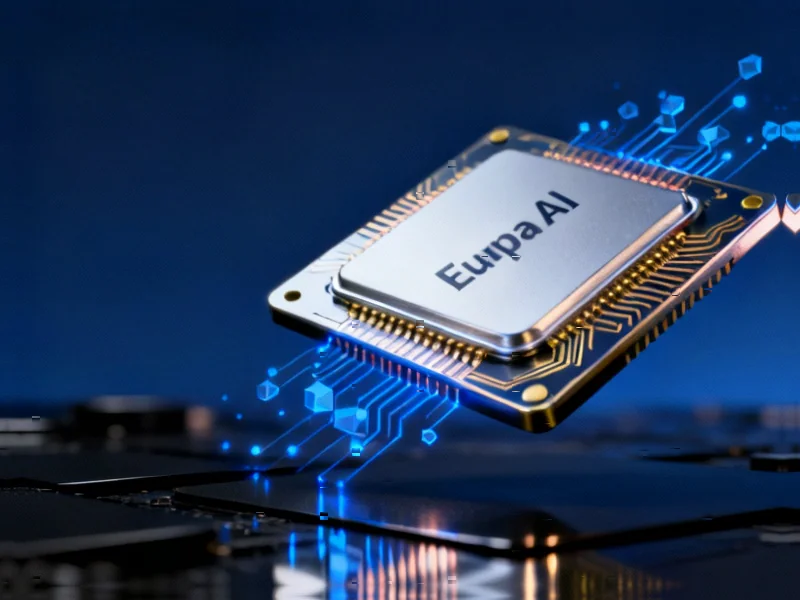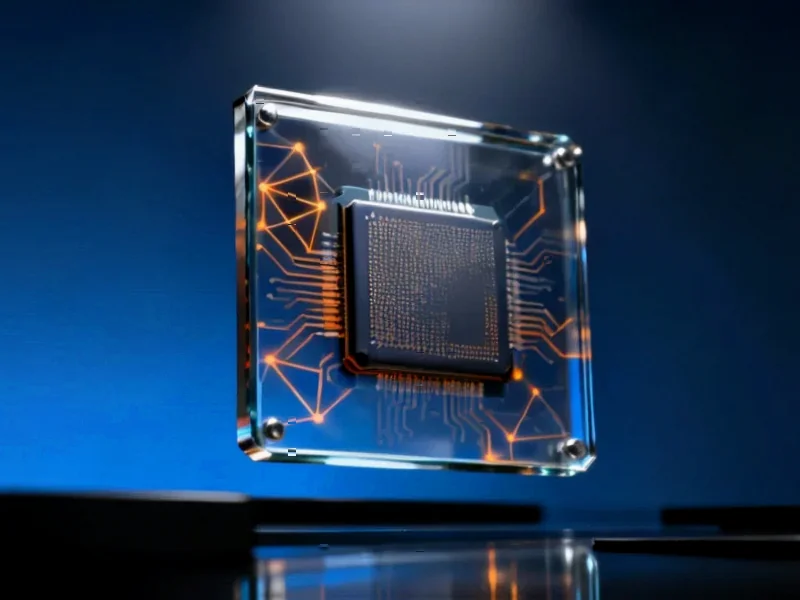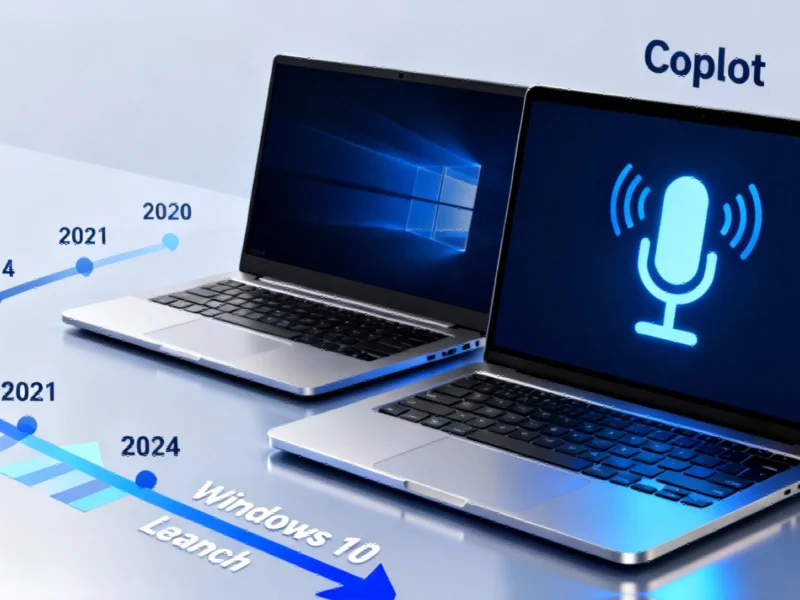The Jobless Growth Conundrum
As artificial intelligence continues its rapid integration across industries, economists and business leaders are grappling with a fundamental question: is AI enabling economic expansion without corresponding job creation? Recent analysis from Goldman Sachs highlights this emerging pattern, noting the unusual disconnect between robust economic growth and sluggish employment gains. This phenomenon, termed “jobless growth,” represents a significant departure from historical economic relationships where productivity gains typically translated into broader employment opportunities.
Table of Contents
- The Jobless Growth Conundrum
- Corporate Reality: Efficiency Gains vs. Employment Trends
- The Recession Test: Accelerating Structural Shifts
- Historical Context vs. Unprecedented Potential
- Corporate Responses and Strategic Positioning
- Broader Economic Implications
- Looking Forward: Adaptation in the AI Era
The current economic landscape bears watching signs that echo previous technological transformations. During the 2001 recession following the internet bust, companies that had been gradually implementing digital technologies were forced to accelerate their efficiency measures. The economic downturn revealed how many positions had become redundant through technological advancement, leading to what economists labeled a “jobless recovery.” Today, AI presents a similar inflection point, but with potentially broader implications given its general-purpose nature and rapid adoption curve.
Corporate Reality: Efficiency Gains vs. Employment Trends
Major financial institutions are already demonstrating AI’s transformative impact on operations and staffing. Bank of America’s experience is particularly telling – the institution now operates with approximately 25% fewer employees than fifteen years ago while generating dramatically improved financial performance. CEO Brian Moynihan noted that “the bank’s net income 15 years ago was a loss of $2 billion; last year, with 25% fewer workers, it was a profit of $27 billion” – a stark illustration of how technology can drive productivity independent of workforce expansion.
Similarly, Citigroup CEO Jane Fraser highlighted specific AI implementations that create substantial efficiency gains. One software production application alone generates approximately 100,000 hours of weekly capacity savings. These examples underscore a critical trend: AI is delivering measurable productivity improvements that may reduce the correlation between economic output and employment levels., according to market insights
The Recession Test: Accelerating Structural Shifts
Economic contractions have historically accelerated technological adoption and workforce restructuring. As Goldman Sachs analysts suggest, a recession could clarify whether AI is fundamentally altering the employment landscape. During downturns, companies facing pressure to maintain profitability often make permanent cuts to positions that technological advances have rendered less essential. Routine and repetitive roles are particularly vulnerable, with businesses less likely to rehire for these positions once economic conditions improve.
This dynamic creates a potential scenario where AI enables companies to navigate economic challenges with reduced human labor input, potentially leading to recoveries with limited job creation. The technology‘s ability to automate complex cognitive tasks, not just manual labor, expands the range of positions that could be affected compared to previous technological shifts.
Historical Context vs. Unprecedented Potential
Throughout economic history, general-purpose technologies have consistently disrupted employment patterns while ultimately creating new opportunities. The industrial revolution, electrification, and computerization all followed this pattern – initial displacement followed by the emergence of new industries and roles. However, AI presents unique characteristics that challenge this historical precedent., as our earlier report, according to recent innovations
Unlike previous technologies that augmented human physical or computational capabilities, AI systems increasingly demonstrate autonomous problem-solving and creative capacities. This raises fundamental questions about whether human workers will maintain their comparative advantage across domains. While historical patterns suggest that human adaptability and creativity will eventually generate new employment opportunities, the scale and pace of AI advancement could test this assumption.
Corporate Responses and Strategic Positioning
Business leaders are navigating this transition with varying approaches. Some organizations, like Meta, are restructuring their AI divisions while maintaining investment in top-tier talent. Others, including Tesla, are increasing R&D spending despite short-term profit impacts, betting on long-term strategic positioning in what Elon Musk describes as building a “robot army.”
Meanwhile, compensation structures reflect the premium placed on AI leadership. Microsoft’s decision to significantly increase CEO Satya Nadella’s compensation package to nearly $100 million underscores the value placed on executives who can position companies at the forefront of technological transformation. The board explicitly linked this compensation to Nadella’s work establishing “Microsoft as a clear artificial intelligence leader for this generational technology shift.”
Broader Economic Implications
The potential decoupling of economic growth from employment has profound implications for policy, inequality, and social stability. If AI enables sustained economic expansion with limited job creation, societies may need to reconsider fundamental structures including:
- Education and retraining systems to prepare workers for roles less susceptible to automation
- Social safety nets and potential new models of income distribution
- Corporate responsibility in balancing efficiency gains with employment preservation
- Regulatory frameworks governing AI development and deployment
Financial markets are already reflecting these tensions, with technology leaders seeing significant valuation premiums while traditional employment indicators show mixed signals. The coming years will likely test whether AI represents another chapter in the ongoing story of technological progress or a fundamental shift in the relationship between productivity, growth, and employment.
Looking Forward: Adaptation in the AI Era
As businesses and policymakers confront these challenges, the critical question remains whether human ingenuity will continue to identify new domains for value creation. The historical pattern of technological disruption suggests optimism, but the unique characteristics of artificial intelligence – particularly its potential to replicate and exceed human cognitive capabilities – introduce unprecedented variables into this equation.
The current economic expansion provides only partial insight into AI’s long-term impact on employment. A future recession may serve as the true test, revealing whether companies can maintain output with significantly reduced human labor. Until then, businesses, workers, and policymakers must navigate this transition with careful attention to both productivity opportunities and their potential social consequences.
Related Articles You May Find Interesting
- The Unseen Data Crisis Derailing Industrial AI Deployments
- Dutch Minister’s Chip Export Intervention Threatens European Auto Manufacturing
- AWS’s AI Comeback Strategy: How Amazon Plans to Overcome Its Cloud Computing Lag
- Rethinking Hybrid Work: Why Quarterly In-Person Collaboration Outshines Weekly O
- Rethinking Hybrid Work: Why Quarterly In-Person Collaboration Outshines Weekly O
This article aggregates information from publicly available sources. All trademarks and copyrights belong to their respective owners.
Note: Featured image is for illustrative purposes only and does not represent any specific product, service, or entity mentioned in this article.



